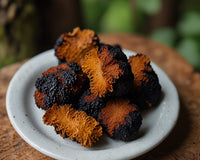introduce
Sleep-disordered breathing includes conditions ranging from simple snoring to obstructive sleep apnea (OSA). Treatment for sleep-disordered breathing must be individualized. Initial management should include conservative measures such as weight loss, reduction of alcohol consumption, postural therapy, and medications such as topical nasal steroids. More targeted treatments, such as mandibular advancement devices and continuous positive airway pressure (CPAP), are useful in selected cases but are limited by poor compliance. If these conservative measures fail, surgery may be considered. The goal of the surgery is to reduce airflow obstruction and turbulence during sleep. This obstruction can occur at multiple sites in the upper respiratory tract, so careful evaluation is critical to appropriately guide treatment. Specifically, drug-induced sleep nasal endoscopy was performed to evaluate the nasal passages, nasopharynx, oropharynx, and hypopharynx during induced sleep. This allows clinicians to identify target areas—specifically shrinking, stiffening, and stabilizing soft tissue. As with all surgeries, the goal is to perform the least invasive procedure with the fewest side effects, the fewest complications, and a good long-term outcome. Sleep surgeons have many surgical options.
Soft tissue radiofrequency ablation probes deliver high-frequency alternating current into the tissue, causing ion excitation. This subsequently leads to local tissue heating, cell necrosis, and scarring. Histological studies showed that the lesion spread from the probe to a circumference of 8 mm. This has the distinct advantage of providing therapeutic tissue necrosis in the stromal layer but leaving the mucosal layer largely unaffected. The power delivered to the tissue is regulated by a built-in algorithm within the generator. This ensures maximum tissue necrosis without charring. In the initial phase, there is an acute inflammatory reaction manifested by pain and edema; this is followed within three weeks by collagen deposition and scarring. Further tissue volume loss and scar contracture occur over the next few weeks, causing the soft tissue to harden and shrink.
Radiofrequency can be used on fibrotic tissue and can also be used as a cutting technique with minimal collateral damage. Radiofrequency works without stimulating nerves and muscles, which allows it to be used in clinical settings without the need for general anesthesia.
There are currently several manufacturers of radiofrequency generators for sleep surgery—Celon ® (Olympus KeyMed Medical Industries and Equipment Ltd., Southend-on-Sea, UK), Coblator ® (Arthrocare Corp, Sunnyvale, CA, USA), Ellman ® (Oceanside, NY, USA), Somnus ® (Gyrus, Memphis, TN, USA) and Sutter ® . The high-frequency alternating current they produce varies in frequency and polarity. Blumen et al. Four of these generators were compared to investigate whether frequency or polarity had any impact on snoring outcomes or pain. They concluded that all generators were comparable in terms of safety and efficacy.
nose
In many patients, nasal obstruction is a factor in sleep-disordered breathing. This may be secondary to a deviated nasal septum, polyposis, or inferior turbinate hypertrophy. Radiofrequency is designed to specifically address inferior turbinate hypertrophy caused by allergic rhinitis, or CPAP rhinitis, which is unresponsive to medical treatment.
There are many alternative surgical approaches to treating the inferior turbinate, including partial or total turbinectomy, linear cautery, submucosal diathermy, or minimally invasive assisted turbinoplasty. However, these methods have been reported to cause increased pain, bleeding, and crusting.
Radiofrequency is applied to submucosal tissue, causing fibrosis of the underlying stroma, leaving the epithelium intact. This reduces inferior turbinate volume to minimize nasal obstruction and improve sleep-disordered breathing in conjunction with other procedures. Typically, patients show an initial edematous response of approximately 1 week, followed by subjective improvement of nasal congestion after 2-3 weeks.
The main advantages are that it can be performed relatively quickly, with minimal postoperative pain, and can be performed in a clinical setting under local anesthesia. 85% of patients will have some degree of scabbing after surgery, which resolves within 4 weeks in most cases. Sustained improvement over 14 months after surgery was determined. Sometimes second or third stage treatment is required.
Randomized controlled trials have not established comparisons between techniques for reducing inferior turbinate hypertrophy. Several observational studies have shown that minimally invasive assisted turbinoplasty is more effective in reducing nasal obstruction but radiofrequency reduction produces fewer side effects.
Recommended techniques
The procedure can be performed in the clinic under local anesthesia or in combination with a multi-stage procedure under general anesthesia.
Lidocaine 2%+ 1:80,000 Epinephrine penetrates into the submucosa of the inferior turbinate. This helps determine the correct plane for probe insertion and reduces bleeding.
The Xelon® Pro-breath probe has a power rating of 15 watts. The needle is carefully inserted into the submucosa of the inferior turbinate and passed posteriorly under direct vision. Care must be taken not to penetrate the mucosa medially or exit the inferior turbinate posteriorly. Once the needle is in place, radiofrequency is applied in short bursts every 8 mm as the needle is withdrawn. With visual acuity, atrophy of the inferior turbinate should be visible. Whitening or smoking of the nasal mucosa indicates that the application was too superficial and the needle should be repositioned to the submucosal plane. Incorrect application can lead to increased crusting, adhesions, or mucosal erosion. In bulky inferior turbinates, two or more applications may be required - in these cases the turbinates can be divided into upper and lower parts.
soft palate
In more than 90% of cases, the soft palate causes sleep-disordered breathing. Major and minor surgical procedures include uvulopalatopharyngoplasty, uvulopalatoplasty, and laser-assisted uvulopalatoplasty. These invasive procedures are associated with considerable postoperative morbidity. Radiofrequency treatment of the soft palate can be applied to the interstitial tissue of the soft palate, or it can be used to remove excess palatal tissue by cutting.
Radiofrequency application resulted in a relatively small reduction in soft palate volume. Its primary mechanism of action is thought to be due to increased scarring and subsequent stiffening of the soft palate, thereby reducing the collapsibility of the upper airway. Careful patient evaluation using drug-induced sleep nasal endoscopy is required, multistage applications need to be combined with other target sites, and more than one application may be required. On its own, the technology has been found to be about 30% successful in improving obstructive sleep apnea.
To compare the use of radiofrequency versus laser-assisted uvulopalatoplasty in the treatment of obstructive sleep apnea. They concluded that both treatments require multiple sessions, but radiofrequency appears to have more durable long-term results. reviewed the use of radiofrequency in snoring surgery and found that snoring symptoms were reduced in the short term, but long-term data were lacking. Combined radiofrequency and uvulopalatoplasty was found to be significantly more effective than radiofrequency alone in sleep-disordered breathing.
The main advantage of this technique is fewer side effects compared to more invasive alternatives. The main side effects of radiofrequency on the soft palate include postoperative pain, superficial mucosal erosion, edema, and palatal fistulas. The incidence has been described as 3-4%. Mucosal erosions are attributed to improper placement of the radiofrequency probe and usually heal spontaneously within two weeks. The average postoperative pain duration was determined to be 2.6 days for radiofrequency and 13.8 days for laser-assisted uvulopalatoplasty. It is generally accepted that there is a learning curve with this procedure, as complications appear to decrease with increasing experience. No studies reported velopharyngeal insufficiency, nasopharyngeal stenosis, or dysphagia after surgery.
This surgery almost always needs to be done in conjunction with other parts of the upper respiratory tract, which will produce the best results. Again, it may take a second or third time. Patients with particularly muscular soft palates may be better candidates for more invasive procedures (e.g., laser-assisted uvulopalatoplasty) because radiofrequency treatment alone has limited effect on sclerotic stromal tissue. Likewise, to achieve a more successful outcome in selected cases, it is beneficial to reduce the uvula length by 50% and resect any excess velopharyngeal mucosa. This is used to further improve the upper airway in a minimally invasive manner combined with stiffening of the soft palate. It also preserves swallowing mechanics and reduces nasopharyngeal insufficiency compared to more invasive techniques.
surgical procedure
The procedure is performed under general anesthesia using an orotracheal or nasotracheal tube. A Boyle-Davis plug with a Draffin rod was used to create an optimal surgical field. Cleanse mucous membranes with chlorhexidine to reduce potential infection. Two tonsil swabs are placed behind the soft palate to prevent inadvertent damage to the posterior pharyngeal wall.
Celon ® ProSleep Plus probes operate at 10 watts. Ten submucosal applications are ideally performed on the soft palate, although the exact number depends on the size of the palate. Lidocaine 2% + 1:80,000 Epinephrine penetrates into the submucosal plane prior to application to reduce bleeding and increase interstitial tissue volume to help determine the correct depth. Each application should be 8 mm apart and carefully positioned within the interstitial palatal tissue. Typically, two applications are placed 4 mm from the midline and three applications are placed 8 mm lateral to these locations. Application should not cause blanching of the mucosa or separation of the palate tissue from the posterior aspect.
Celon ® ProCut is used at 25 watts to reduce the uvula by 50% and remove the posterior tonsil mucosa. Care is taken to ensure that the uvula is beveled and that 2-3 mm of mucosa is left between the posterior column and the uvula. After surgery, antibiotics are prescribed for five days to prevent uvula infection.
tonsil
Tonsil tissue is an important contributor to oropharyngeal obstruction and is present in most patients with sleep-disordered breathing. Typically, in these cases, tonsillectomy using multiple approaches is a well-established technique that is effective in alleviating obstructive symptoms. However, tonsillectomy is associated with significant postoperative pain, risk of bleeding, and usually at least 1 or 2 weeks of work time.
Using radiofrequency therapy to reduce tonsils is an alternative. This technique reduces soft tissue while leaving the mucosa intact, similar to its effect on the soft palate and base of the tongue. By keeping the mucosa intact, postoperative pain and risk of bleeding are significantly reduced. It can be performed under local or general anesthesia in combination with multi-level surgery. In a short-term study using this technology, 9 patients returned to work quickly within 1-2 days. In further research, Nelson followed 12 patients for up to 12 months to demonstrate long-term results. Statistically significant improvements in oropharyngeal airway and sleep symptoms were identified. Results lasted for 12 months. Six patients (50%) underwent a second surgery. Although all patients had initial postoperative edema, no patient developed serious complications.
Using radiofrequency to reduce tonsil tissue appears to be safe and effective in selected patients. Conclusions are limited to small observational studies. Arguably, tonsillectomy remains preferable when removing large tonsils, but is limited by postoperative morbidity. The role of radiofrequency in tonsil reduction surgery is not fully understood, but it may be useful for patients who prefer minimally invasive surgery with smaller tonsil tissue as part of a multi-level procedure.
Recommended techniques
The procedure is performed using an orotracheal or nasotracheal tube. The tonsils are exposed with a Boyle-Davis gag and Draffin rod similar to traditional tonsillectomy. Celon ® ProSleep Plus uses 10 watts of power. The probe is inserted into each tonsil at three points, from medial to lateral. Depending on the size of the tonsils, the probe may need to be tilted downward; this ensures that the radiofrequency is applied to the interstitial tonsillar tissue rather than entering the parapharyngeal space.
base of tongue
The base of the tongue is responsible for approximately 25% of single-segment snoring and a greater proportion of multi-segment snoring. Management of tongue base obstruction can be challenging due to difficulty in access and its functional importance in swallowing.
Non-surgical interventions include mandibular advancement splints or chin straps. However, they are restricted to patients with good dentition and are often poorly tolerated. Surgical interventions to address tongue base or hypopharyngeal obstruction include mandibular osteotomy, partial glossectomy, or hyoid suspension. Although treatment of obstructive sleep apnea (OSA) is effective in selected patients, these procedures are particularly invasive and associated with significant morbidity. They are generally reserved for patients with severe OSA who cannot tolerate CPAP, as they are considered too extensive for less severe OSA and snoring.
Radiofrequency tongue base reduction was first described in 1999 and its effectiveness is attributed to the reduction and stabilization of the tongue base secondary to scarring.
Several observational studies have been conducted to investigate the role of radiofrequency tongue base therapy in OSA and snoring. A recent systematic review showed that in the short term, results were generally promising, with improvements in objective and subjective features of obstructive sleep apnea. Long-term results are limited but suggest that initial improvements may diminish over time.
Initial side effects such as tongue numbness, dysgeusia, and mild tongue weakness may occur but usually resolve within three weeks. In 98 et al. One case of tongue base hematoma was treated conservatively. There were two cases of airway compromise due to tongue base edema and two cases of tongue base abscess]. Cleansing mucosal surfaces with chlorhexidine has been recommended to reduce this risk. Ulceration of the base of the tongue, dysphagia, and crusting have been reported in case reports.
found that patients with isolated tongue base hypertrophy had poor sustained improvement in snoring after single-modality radiofrequency treatment. This highlights the importance of dynamic airway assessment prior to any intervention. Patients undergoing this procedure should be carefully selected and the presence or absence of tongue base narrowing should be determined. This procedure should also be combined with multi-level surgery as determined by sleep nasal endoscopy. Although the procedure can be performed under local or general anesthesia, general anesthesia can significantly improve visualization, thereby improving probe placement and increasing efficacy.
The main advantages of this technique are that it is minimally invasive, virtually painless and, in some institutions, can be performed under local anesthesia. As with radiofrequency treatment of the soft palate, the disadvantages are the long-term recurrence of symptoms and the potential need for multiple treatments. Arguably, in this regard, multiple applications in selected patients are acceptable because of its low morbidity and gradual improvement in symptoms.
Recommended techniques
The surgery is performed under general anesthesia with a nasotracheal tube. The tongue base mucosa is cleaned with chlorhexidine to reduce the risk of postoperative infection. Obtaining an optimal view of the surgical field is critical to ensuring effective placement of radiofrequency electrodes, thereby maximizing efficacy and minimizing complications. A Boyle-Davis gag and a Draffin rod were used for optimal exposure. Exposure of the base of the tongue can be improved by pulling the tongue forward before opening the Boyle-Davis gag. Additionally, applying gentle external pressure to the mylohyoid can further optimize the field of view.
Celon ® ProSleep Plus uses 6 watts of power. Six interstitial applications are typically applied to the base of the tongue, but the exact number depends on the size of the tongue base tissue and its impact on the patient's symptoms. This is carefully assessed during preinterventional sleep rhinoscopy. The probe should be perpendicular to the lingual surface and medially away from the neurovascular bundle. This reduces the risk of lingual nerve damage and hematoma.
complication
Specific complications and rates are associated with each site of radiofrequency application. Complications reported for each procedure are summarized. The relatively low complication rate is thought to be due to the radiofrequency mechanism. Radiofrequency causes ion agitation and therefore heats the surrounding tissue rather than the probe itself; this produces a predictable pattern of tissue damage at significantly lower temperatures than direct electrocautery. A histological study determined that the size of lesions caused by interstitial RF was reliably oval lesions with a width of 6-7 mm and a length of 7-8 mm. Lesion size was independent of local anesthetic or power settings. No significant collateral tissue damage was noted after this period. It was subsequently recommended that to avoid complications, RF applications should be spaced at least 8 mm apart and that local anesthetic be used to increase interstitial volume, thereby reducing inadvertent mucosal erosion or fistulas. Additionally, the RF probe must be fully inserted to prevent mucosal damage. In addition to minimal tissue damage, the minimally invasive nature of the technique results in a low complication rate.
| program | possible complications |
|---|
| inferior turbinate | Bleeding and scabbing * Adhesion and infection |
| soft palate | Palate edema, infection, palate erosion/ulcer, palate fistula, bulb *Hemorrhage/hematoma, velopharyngeal insufficiency, dysphagia, pharyngeal stenosis, hemorrhage |
| tonsil | * bleeding |
| base of tongue | Tongue base edema (airway damage), tongue ulcers, infection/abscess, hematoma, tongue weakness (hypoglossal nerve damage), taste changes, tongue numbness, difficulty swallowing |














